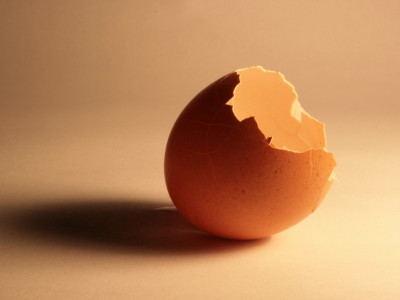Succeeded to make bricks at room temperature using human psychology

Brick has been used for a long time as a building material for houses, and it is widely used all over the world today. It is reported that South Africa's student team succeeded in producing such bricks at room temperature without burning with high heat by using 'human psychic'.
World-first: Bio-bricks from urine | UCT News
https://www.news.uct.ac.za/article/-2018-10-24-world-first-bio-bricks-from-urine
Suzanne Lambert and Vukheta Mukhari who are enrolled in the master's program of civil engineering department of Cape Town University have experimented how to produce bricks in an innovative way for several months. And the two succeeded in creating bricks named "Bio-brick" using "human psycho".
Bacteria that create enzymes called " urease " are established in the sand which is the material of biological bricks. Urease decomposes the urea contained in the shiver to produce calcium carbonate , which means that it will harden the brick.

Dr. Dyllon Randall, a lecturer on water quality engineering and adviser to Mr. Lambert, said, "The process of creating this bio-brick is similar to the process by which shells are made." Calcium carbonate produced by urease from human psychology seems to be able to consolidate sand in any form, so it is possible to solidify sand not only in a general brick-like rectangle but also in a cylindrical shape.

The idea of "solidifying bricks using urea" was conducted by researchers in the US several years ago using synthetic solutions. However, Mr. Lambert succeeded in hardening the brick using the "real human psycho" for the first time in the world, based on the basic research with the Swiss student Jules Henze who had been collaborating in 2017 Did.
In general calcined bricks, nearly 1,400 degrees of heat is added in the kiln, and in the process a large amount of carbon dioxide is released, but the bioregger can be produced in a mold placed at room temperature. In addition to reusing pesticides that are normally discarded as usual, it also helps to reduce greenhouse gas emissions that cause global warming. According to Dr. Randall, "It is possible to strengthen the strength of bricks by growing bacteria over time," and it seems that it is possible to make bricks with stronger strength as time goes on.

Also, nitrogen and potassium, which are important components of commercial fertilizer, are produced as a by-product of the process of producing biorega. The collected shit first goes through the process of solidifying and removing the ingredients from which the fertilizer is based and then shifting to the process of consolidating the bricks with the remaining liquid. In addition, Dr. Randall thinks that there is a possibility that further fertilizer can be made from the liquid remaining after hardening the brick.
From a chemical point of view, human psychology seems to be full of abundant resources to say "liquid gold". Among household wastewater, the amount occupied by psychology does not become 1%, but it accounts for 80% of nitrogen contained in wastewater, 63% of potassium, and 56% of phosphorus . In fact, 97% of the phosphorus contained in the psycho can be converted into calcium phosphate used for fertilizer, so it can be a very important resource at the present time when phosphate is being exhausted globally.

There are problems remaining in terms of methods of collecting psychology and transportation etc. in the method of using brush to produce bricks. Also, for the moment Lambert and others said that they are making biological bricks using only male psychologists because they are "socially recognized". However, with current social awareness, there is a problem that it is impossible to use women's psychology which accounts for half of the population, and it departs from the original biological brick idea of reducing society's waste as much as possible. Also it seems necessary to solve many problems in practical application of bio bricks.
Related Posts:
in Science, Posted by log1h_ik







